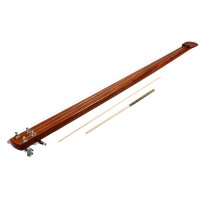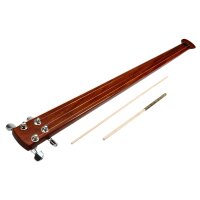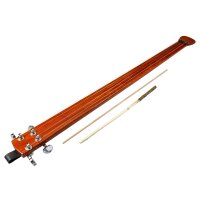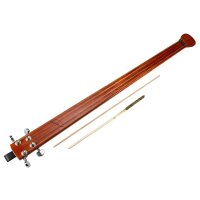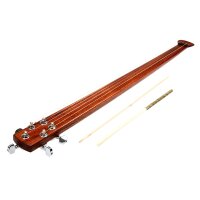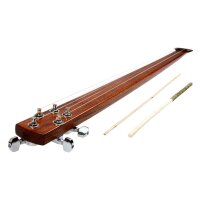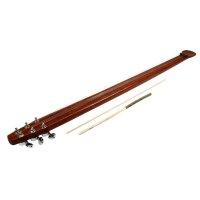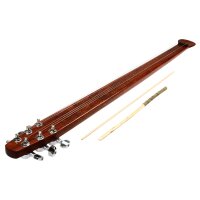Mouth Bow
The mouth bow is an ancient, simple stringed instrument. It consists of a curved piece of wood that is usually stringed with one string. Thus, it is very similar to a hunting bow - indeed, this is probably its origin. After all, obtaining food, in this case by hunting, was and still is the most important thing. It was only later that people had sufficient leisure to devote themselves to pleasure.
To produce sounds, the player touches the string with a finger, strikes it with a stick or plucks it.
While there are mouth bows with their own soundbox, with the actual and original version the player has to provide it himself. He does this by using his oral cavity. He repeatedly makes changes to his lips, gums and oral cavity, causing different sounds (harmonics, overtones).
There are mouth bows with a flat string and with a round string. It is now mostly made ??of steel, whereas previously horsehair, tendons or plant fibers were used. The instrument can be tuned, which enables several musicians to play together. In mouth bows with a flat string, the bow usually consists of rattan fibres. It is also plucked or struck as in models with a steel string, but its length can be changed with a second rod or it can be tapped, so that the keynote can be varied. This leads to further sound possibilities.
The mouth bow was already known in the Stone Age, evidence of which is provided by a cave painting in France. It is now common mainly in Africa, but is also played in some areas of Asia and South America.
Unlike many other instruments, mouth bows are mainly used for meditation. People can therefore immerse themselves in the soft but very melodic sounds. Playing on the mouth bow also enhances the well-being of the player, who often sings or hums along with it.
